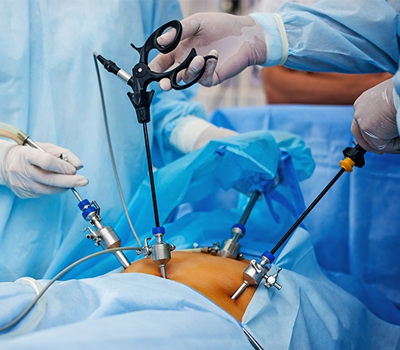


General surgery is the medical specialty dealing with abdominal surgical problems such as gallbladder stones, appendix, hernia, and colo-rectal problems such as hemorrhoids (piles). Thyroid and breast disorders are also treated under general surgery, as are several kinds of benign (non-cancer) growths such as lipoma, cysts, etc. in various parts of the body. The majority of general surgical procedures are now performed as laparoscopic procedures (Minimally Invasive Surgery).
Lifeline Hospital specializes in the following categories of General Surgery
Colo-rectal surgery – The rectal and colon diseases are treated under the colorectal sub-specialty within general surgery. Some of the major diseases treated under this surgical procedure include:
Breast surgery – Non-cosmetic breast surgery procedures, such as mastectomy and lumpectomy for treatment of breast cancer.
Endocrine surgery – Endocrine surgery procedures involve primarily the thyroid glands in the neck. Thyroidectomy is the most common procedure in this category.
Surgical Oncology – Surgical oncology is a branch of general surgery which deals with the treatment of various cancers in the abdomen and breast. Surgeries include Modified Radical Mastectomy and lumpectomy in the breast and various types of intestinal resections in the abdomen.
For further information on General Surgery procedures and cost, please call us and consult any of our general surgeons. We assure you an accurate description of the procedure along with days stay and pricing for the procedure.
Laparoscopic surgery is a form of minimally invasive surgery which is performed through small (keyhole) incisions. As a result, the surgeries can be performed
Day Care procedures. At most, the patient may need to stay for one night. The recovery time is much lower compared to conventional techniques, it is far less painful with lesser bleeding during and after the surgery. It also has minimal surgical scar marks and therefore gives a much better cosmetic result.
Following are some of the surgeries performed using this technique:
The surgery is performed under general anesthesia. The surgeon starts by making small incisions around the abdominal area for insertion of the laparoscope and instruments. Through the incision, the laparoscopic instruments are inserted along with the tube and light source. Gas is pumped into the abdomen in order to create a larger cavity. The surgical procedure is carried out by the surgeon while visualizing the interior of the abdomen on the video monitor and using specially designed instruments. After the surgical objectives are achieved, the surgeons remove the gas and the instruments from the stomach. The incision points are then stitched and a dressing is applied. Most often, the doctors allow the patients to go home the same day. On some occasions, patients are required to stay overnight under observation.

